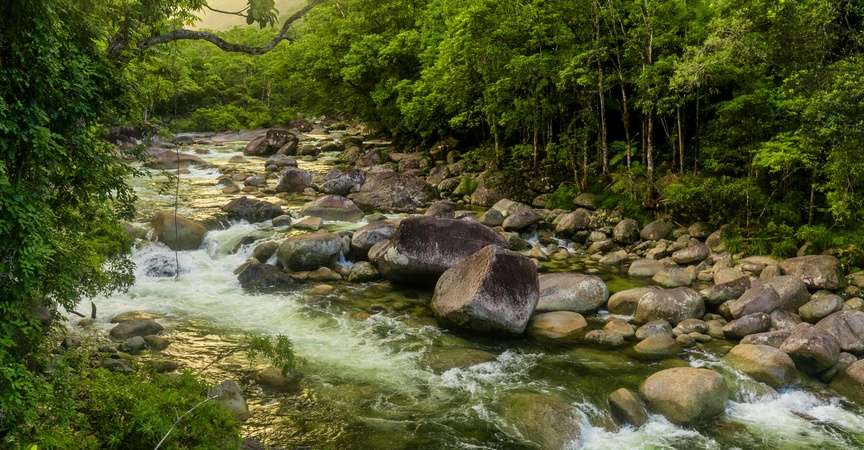By Abel Valdivia, WWF Lead Marine Conservation Scientist
The Galapagos Islands, a remote tropical paradise nested in the heart of the Eastern Pacific Ocean, have long been a beacon of ecological marvels, an evolutionary laboratory, and ground for scientific discovery. As a marine conservation scientist on WWF’s Oceans Team, my journey to these enchanting isles with Natural Habitat Adventures unveiled not only the awe-inspiring tapestry of life but also the sobering consequences of climate change on their delicate marine and terrestrial ecosystems.
The Galapagos Islands’ unparalleled biodiversity is an outcome of evolution in isolation
Stepping onto the Galapagos Islands was akin to entering a realm of unparalleled splendor. The legacy of Charles Darwin’s Beagle voyage was vividly alive, as I encountered a dazzling array of unique species that had evolved in splendid isolation. From miniature finches to the melodious mockingbirds, magnificent albatrosses, salt-crusted marine iguanas, Galapagos penguins to the captivating blue-footed boobies, the islands were alive with an orchestra of life that had adapted uniquely to these volcanic landscapes.

© Abel Valdivia / WWF
The Galapagos marine ecosystem unveiled a mesmerizing kaleidoscope of life. Majestic green sea turtles gracefully glided through the azure waters, a testament to the resilience of these ancient mariners. The vibrant corals that adorned the ancient lava seafloor and many fish species painted an underwater canvas of colors, harboring a world of intricate relationships beneath the surface.
As I ventured beneath the cerulean waves, I was captivated by the balletic movements of the Galapagos penguins—a tropical species found in these equatorial waters, uniquely adapted to thrive amidst volcanic shores and warmer waters. These charismatic birds highlight the islands’ remarkable ability to nurture diverse life forms.
Even in this Edenic paradise, there is the ominous shadow of climate change
The climate crisis casts a pall over the Galapagos. The convergence of four ocean currents and the geographical isolation that blessed the islands with unique species now rendered them susceptible to the impacts of human-induced climate change. And many species are already experiencing the drastic effects of warming waters, changes in precipitation patterns, and fluctuations in the availability of food.

© Abel Valdivia / WWF
As I delved deeper into my exploration, the reality of this threat became starkly evident. Corals, once vibrant and bustling havens of marine life, now faced bleaching and degradation due to rising sea temperatures and ocean acidification. The delicate balance that sustained the marine iguanas foraging upon algae-laden shorelines hung in the balance as changing ocean dynamics threatened their food sources. Small changes in ocean temperatures and nutrient supply to the islands have a significant cascading effect on the entire food web that the islands support.
ENSO is intensifying and threatening the islands’ delicate ecosystems
The Galapagos Islands have become a stage for a dramatic dance between the El Niño-Southern Oscillation (ENSO) and La Niña events— two interconnected climate phenomena occurring in the tropical Pacific Ocean. They have intensified due to anthropogenic climate change and significantly impacted global weather patterns. The increased frequency of ENSO events presents a formidable challenge to endemic marine species, disrupting food chains and habitats with devastating effects.
During ENSO events, the sea surface temperature increases in the central and eastern equatorial Pacific Ocean. Currently, the region is five degrees Celsius warmer than normal. Warmer waters around the Galapagos stresses marine species such as corals, resulting in less food for other creatures like marine iguanas and sea lions.

© Abel Valdivia / WWF
But it’s not just marine life that is impacted by warming oceans
Interestingly, terrestrial species experience a paradoxical tale during ENSO events. The surge of rainfall and increased food availability brings respite and renewal to land-dwelling inhabitants. The cactus finches thrive on this bounty with their specialized beaks. However, the pendulum swings the other way with La Niña. While marine species find reprieve and an opportunity to recover, terrestrial inhabitants are plagued by harsher conditions, magnifying the challenges they face.
Beyond the well-known ENSO and La Niña, the Galapagos Islands grapple with the relentless grip of increased climate variability. Fluctuating temperatures, shifting precipitation patterns, and dynamic ocean currents contribute to uncertainty for both marine and terrestrial species. The delicate tapestry of life feels the strain of these unpredictable changes, magnifying the pressures already imposed by a changing climate.
The Galapagos Islands’ biodiversity increases the urgency for climate action
The impact of extreme weather events and climate variability underscores the pressing need for concerted conservation efforts. The Galapagos Islands, with their unique biodiversity and intricate ecosystems, serve as a microcosm of the challenges faced by our planet. The urgency to mitigate climate change, reduce our carbon footprint, and protect vulnerable species echoes from this remote archipelago to the farthest reaches of Earth.

© Abel Valdivia / WWF
Despite the challenges, conservation efforts in the Galapagos offer a glimmer of hope. WWF, local organizations, scientists and communities are working tirelessly to monitor and protect the islands’ delicate ecosystems. By implementing sustainable tourism practices, promoting responsible fishing, and advocating for climate action, they strive to ensure that the Galapagos Islands remain a haven for biodiversity.
A journey of revelation
The trip was a symphony of biodiversity and a clarion call for conservation. The islands’ vibrant tapestry of life is a testament to the beauty and resilience of our natural world. However, the undercurrent of climate change threatens to disrupt this harmony, imperiling species that have thrived for millennia on these lava-formed islands.
As stewards of our planet, it falls upon us to act. The Galapagos Islands have imparted a profound lesson—one that transcends their shores and resonates globally. By confronting climate change, championing sustainable practices, and preserving the delicate ecosystems that cradle life, we can ensure that the Galapagos Islands continue to captivate, inspire, and endure for future generations. Our collective efforts can safeguard this living laboratory and serve as a beacon of hope for our planet.

© Abel Valdivia / WWF

























